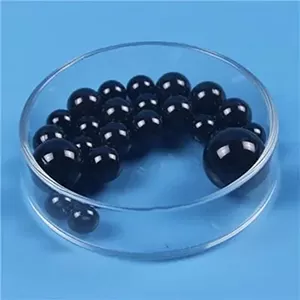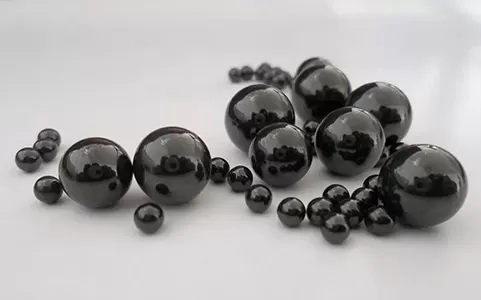The surface of bearing ceramic balls is prone to oxidation due to material composition, high - temperature operating environments, and exposure to reactive substances, with oxidation rates varying based on ceramic type and external conditions. Oxidation can alter surface properties, affecting friction, wear resistance, and overall performance, making it a critical concern in bearing applications.

Material composition plays a key role in oxidation susceptibility. Silicon nitride ceramic balls, widely used in high - performance bearings, contain silicon, which reacts with oxygen at elevated temperatures to form silicon dioxide (SiO₂) layers. While this oxide layer initially acts as a protective barrier, prolonged exposure to high temperatures can cause it to thicken, leading to surface cracking or spalling. Zirconia ceramic balls, though more oxidation - resistant, may still oxidize if they contain trace impurities like metallic oxides, which accelerate reaction with oxygen.
High - temperature operating environments are a primary driver of oxidation. Bearing ceramic balls in automotive engines or industrial machinery often operate at temperatures exceeding 300°C, where oxygen molecules become more reactive. At these temperatures, the kinetic energy of oxygen increases, facilitating chemical reactions with ceramic surfaces. For example, silicon carbide ceramic balls, though hard, oxidize significantly above 1000°C, forming a silica layer that weakens the material’s structural integrity over time.
Exposure to reactive substances exacerbates oxidation. Lubricants used in bearings may contain additives that, when decomposed at high temperatures, release oxygen - rich compounds or corrosive agents. These substances react with ceramic surfaces, accelerating oxidation. Additionally, moisture or humidity in the operating environment can contribute to oxidation, especially in combination with heat, as water molecules can dissociate and provide oxygen for chemical reactions.

Surface defects and processing residues also promote oxidation. Micro - cracks or pores on the surface of bearing ceramic balls, formed during manufacturing or wear, create more reactive sites for oxygen adsorption. Residues from grinding or polishing, such as metal particles or abrasive compounds, can act as catalysts, speeding up oxidation reactions. Even small amounts of these contaminants can significantly increase oxidation rates, particularly under high - stress conditions.
Ceramic type influences oxidation resistance. Alumina ceramic balls, composed primarily of aluminum oxide (Al₂O₃), are highly resistant to oxidation due to their stable oxide structure, making them suitable for moderate - temperature applications. In contrast, silicon nitride and silicon carbide, while offering superior mechanical properties at high temperatures, are more susceptible to oxidation, requiring protective coatings or alloying with elements like aluminum or yttrium to enhance resistance.
Oxidation affects bearing performance by altering surface roughness and reducing wear resistance. A thick oxide layer can increase friction between the ceramic ball and raceway, leading to higher energy consumption and heat generation. In severe cases, oxide layer detachment can cause abrasive wear, damaging both the ball and the bearing assembly, potentially resulting in equipment failure.
Preventive measures include using oxidation - resistant ceramic grades, applying protective coatings like titanium nitride (TiN), and controlling operating temperatures. Regular maintenance, such as cleaning to remove reactive residues, also helps minimize oxidation. These steps are crucial for extending the service life of bearing ceramic balls in demanding applications.
In summary, the oxidation of bearing ceramic balls is driven by material properties, high temperatures, reactive substances, and surface conditions. Understanding these factors allows for better material selection and maintenance practices, ensuring reliable performance in bearing systems.



